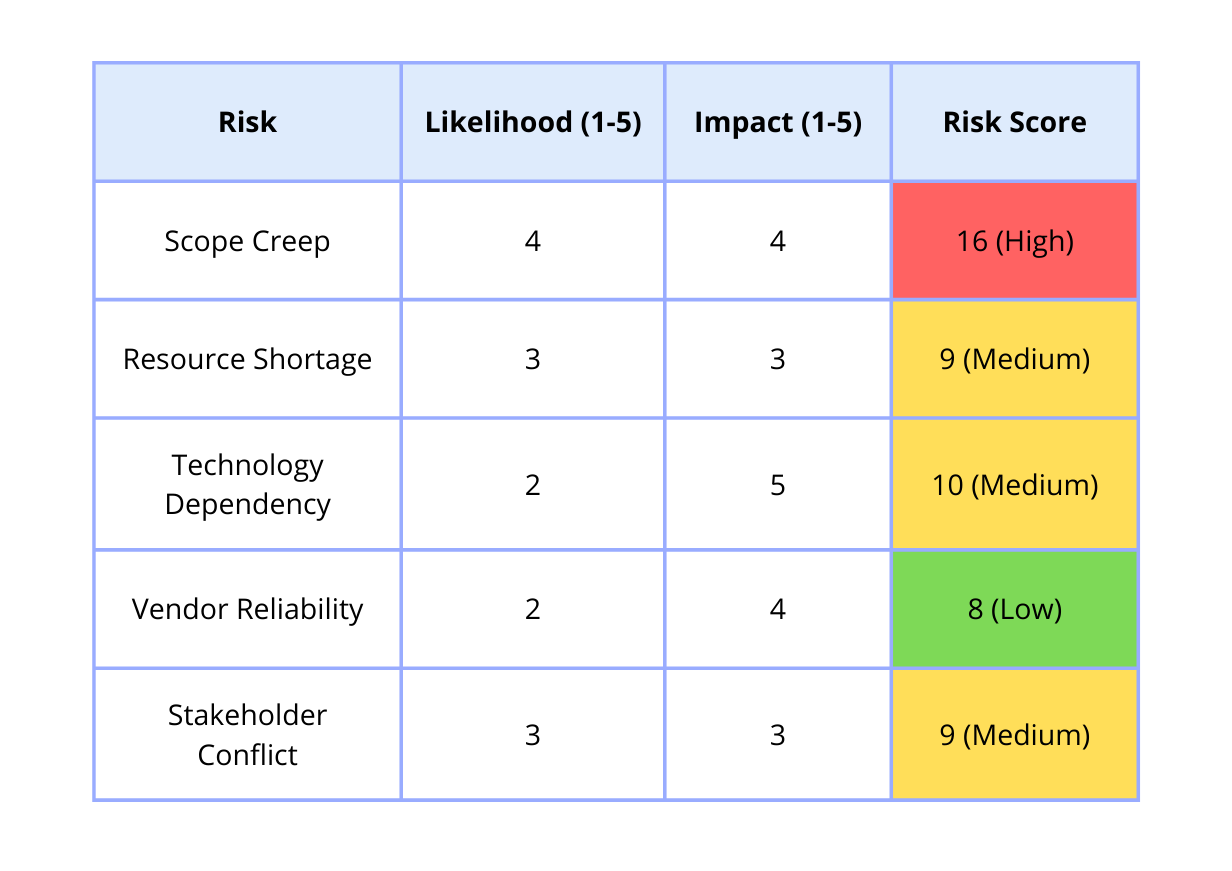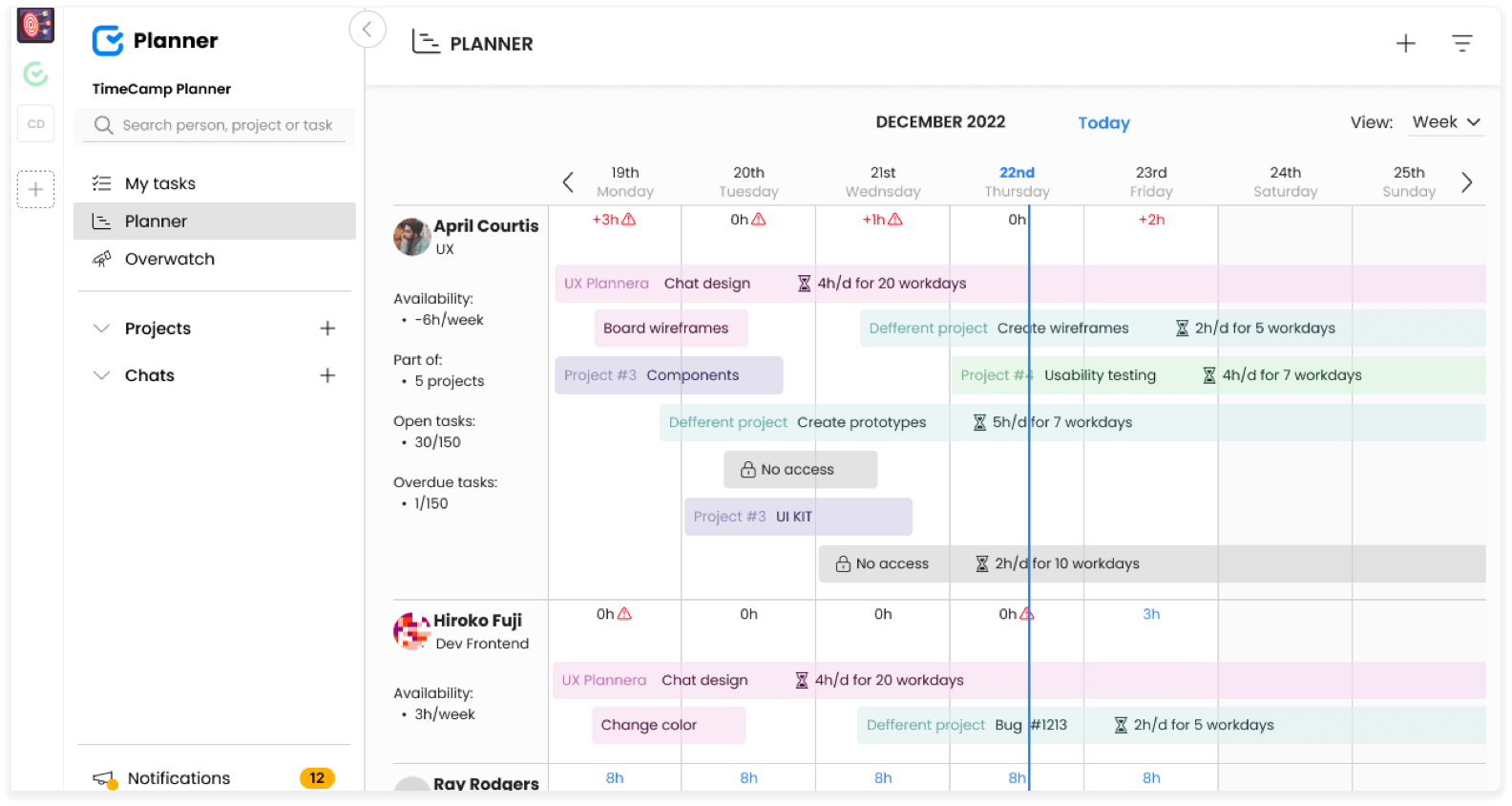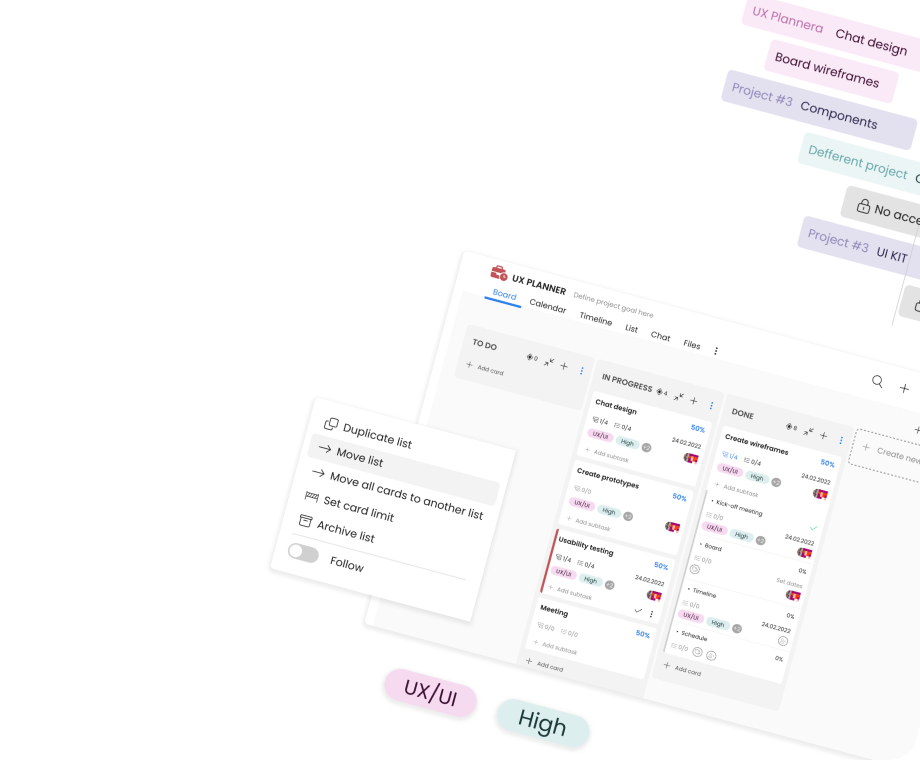How to Manage Project Risks in 5 Steps
Contents page
- What Is Project Risk Management?
- Types of Project Risks
- What Is a Project Risk Management Plan?
- How to Manage Project Risk?
- Step 1: Identifying Risks
- Step 2: Risk Assessment
- Step 3: Risk Prioritization
- Step 4: Risk Response Planning
- Step 5: Risk Monitoring and Control
- Helpful Resources for Risk Management
- How Do You Manage Risk?
Risk management is a fundamental part of successful project management. Understanding potential risks and putting measures in place to mitigate them can be the deciding factor between project failure and success.
Regardless of the project's size or scope, a comprehensive risk management plan can keep a project on track, ensuring it delivers the desired outcomes on time and within budget. Here's your robust five-step guide to effective project risk management.
What Is Project Risk Management?
To fully understand how to manage and get the most out of managing risk, you first need to know the basics. You can skip this part if you're familiar with the concept of risk management.
What is risk? The Cambridge Dictionary defines risk as the possibility of something bad happening. Risk also encompasses the effect of a risky action or situation on the course of things.
And what's project risks management? It's any potential event that can impact the project in a good or bad way. Risk events can come from various sources, including the project team, the project itself, and the external environment.
The role of a project manager is to identify, assess, and handle risks to successfully reach project objectives and try to minimize the negative impact.
It's important to emphasize that you can benefit from risk management in all business areas, types of projects, niches, and industries. It's one of the most effective approaches to solving problems in organizations and their projects.
Risky Business: Positive risk vs. negative risk
Another important aspect is the influence of the risk on your project—is it a positive or negative risk?
Negative risks are those that are unfavorable for the project lifecycle. They may include poor planning process, lack of specified project outcomes, budget overspending. It can be anything that endangers the project's success and doesn't bring any benefits.
However, all the risks in project management don't have to be negative. Positive risks open many opportunities for growth: releasing a brand-new product or feature, investing more money in a specific business endeavor, finishing a project before the due date, etc.
Project risk vs. issue in project management
According to the Project Management Institute (PMI), there is a specific distinction between project risk and project issue:
"The key difference is an “issue” already has occurred and a “risk” is a potential issue that may or may not happen and can impact the project positively or negatively. We plan in advance and work out mitigation plans for high-impact risks. For all issues at hand, we need to act immediately to resolve them."
Simply put, a project issue has already happened (or is happening) and you need to fix it right now. While project risk can happen in the future, and you need to identify it (preferably using the risk register), and be ready to have a response plan.
Risk management vs. risk mitigation
Risk management and risk mitigation are terms often used interchangeably, but they don't mean the same. And knowing the difference can help you avoid mistakes.
Risk management encompasses the entire process of identifying, assessing, and controlling risks in a project, while risk mitigation is a specific method within this process that focuses on reducing the impact or likelihood of identified risks. Risk mitigation strategies focus solely on solving the issue when risk occurs.
Types of Project Risks
There are as many risks as many projects. Most are easy to predict with the right risk probability approach, but you need to know what you and your team can expect.
Here are potential project risks examples:
-
Scope creep: Constant or uncontrolled expansion of a project's scope at any time after it begins (usually adding too many requirement features, functions, etc.)
-
Financial risk: Budget overruns, underbudgeting, cost estimation errors, or currency fluctuations affecting the project's financial health.
-
Operational risk: Tied to the day-to-day operations of the project (inadequate training for team members, communication breakdowns, or logistical challenges)
-
Legal and compliance issues: Failure to adhere to legal requirements, contracts, or regulations. These can lead to fines, litigation, or project disruptions.
-
Resource mismanagement: Inefficient resource allocation lowers project risk tolerance.
-
Poor prioritization: Not dedicating enough time and attention to urgent and important tasks can cause delays and influence how the project progresses.
-
Human resource risk: Issues like key personnel leaving, skill gaps, or conflicts within the project team members.
-
Strategy: Not aligning projects with company mission, vision, and goals can lead to uncertainties and chaos in your business.
-
Performance risk: All the aspects that influence project success (timeliness, KPIs, tasks prioritization, lack of skills, clear goals, etc.).
-
Market risks: Stem from changes in market conditions, customer demand, or competition. These can impact the project's success, especially in industries sensitive to market shifts.
-
Technical risks: These involve challenges related to technology and implementation. For example, issues with software compatibility, hardware failures, or complex coding can pose technical risks.
What Is a Project Risk Management Plan?
You can avoid many common project risks with the right approach. That's where a risk management plan comes in handy.
It's a document that outlines how a project team will identify, assess, and manage risks. The project risk management plan should be updated regularly as the project progresses.
This will ensure that the risk management process is effective and that the project team and project stakeholders are prepared to deal with any risks that may arise.
Risk management plan is an effective measure for handling any individual risk events, and keep every team member and key stakeholder in the loop. That way, you'll be prepared for possible issues and increase the chances of project success.
How to Manage Project Risk?
Remember, you can't completely eliminate risk. But you can prepare for difficult situations with the right risk mitigation strategies.
This is your five-step guide that'll help you create a perfect risk management plan.
Step 1: Identifying Risks
Identifying risks is the first crucial step in the project risk management process. Effective identification of these potential pitfalls is an ongoing process involving the entire project team and stakeholders throughout the project life cycle.
Various methods can help you in this process, each with their unique strengths. Here are the most popular methods that can help you identify risk:
-
Brainstorming sessions, where team members come together to think critically about potential risks, can generate a broad list of risks. These sessions encourage open dialogue and foster collective problem-solving by bringing diverse perspectives.
-
For Agile projects, you can use sprint planning, release planning, daily standup meetings and other forms corresponding to this management technique.
-
Interviews with key stakeholders. Preparing for an interview and gathering all information in a document or project management app can help prioritize project risks based on stakeholders' expectations, needs, and fears.
-
SWOT analysis (Strengths, Weaknesses, Opportunities, and Threats). This strategic planning technique can provide insights into internal and external factors influencing the project's success. Historical data from similar projects can also be invaluable in identifying potential risks. Past experiences, lessons learned, and documented issues can provide a solid base for risk identification.
-
Expert judgment can be a powerful method to identify risks. Individuals with relevant expertise can bring insights based on their specialized knowledge or experience in similar projects. This could involve individuals within the project team or external consultants.
These are just a few of the examples. You can jump to Helpful Resources for Risk Management at the end of this article to find more.
Step 2: Risk Assessment
Once you've identified potential risks, the next step is to assess them. This involves determining the likelihood of each risk event occurring and the potential impact on the project if it does. It's essential to note that the risk assessment process is also not a one-time event; it needs to be revisited throughout the project's life cycle as conditions change.
Risk assessment typically involves both qualitative and quantitative techniques.
Qualitative risk analysis involves ranking and prioritizing risks based on their potential impact and likelihood of occurrence. This process often involves expert judgment and historical data.
On the other hand, quantitative risk analysis involves numerically analyzing the potential effects of identified risk. Techniques used in quantitative risk assessments can include decision tree analysis, Monte Carlo simulation, and sensitivity analysis. These approaches can provide more detailed insights into the potential impacts of risks and help you in decision-making.
Both qualitative and quantitative risk analysis methods are essential and often used in conjunction to provide a holistic view of project risks.
Step 3: Risk Prioritization
The next step in project risk management is risk prioritization. This step involves categorizing the risks based on their potential impact and likelihood of occurrence. The ultimate goal is to establish an order of priority for addressing risks, and ensuring that resources are optimally utilized.
To facilitate this, you can use a risk matrix. It's a grid that helps visualize and determine the severity of risk by plotting the likelihood of its occurrence against its potential impact. The risks in the high-impact, high-likelihood quadrant are typically the top priority.
Here's an example of a risk matrix:

-
"Risk" represents the potential risks associated with your project.
-
"Likelihood" and "Impact" are assigned scores from 1 to 5, where 1 is low and 5 is high. These scores are used to evaluate the likelihood and impact of each risk.
-
"Risk Score" is calculated by multiplying the Likelihood and Impact scores. It quantifies the overall risk for each item.
-
"Risk Category" categorizes the risks based on their scores. In this example, risks are categorized as Low, Medium, or High based on your set risk score thresholds.
The risk matrix is a dynamic tool you should update continually as risks evolve and new ones emerge. It allows you to assess and prioritize risks, making focusing on those with higher potential impact easier. You can customize it further by adding descriptions, mitigation strategies, or other relevant project details.
Step 4: Risk Response Planning
With a clear understanding of what your key risks are and their priority levels, the next step is to plan your responses. Essentially, risk response planning involves deciding how to approach and manage each risk. There are four primary risk response strategies—avoid, mitigate, transfer, and accept.
-
Avoidance involves changing the project plan to eliminate the threat posed by an adverse risk, effectively avoiding its impact. This might include altering the project schedule, changing a potentially risky methodology, or even terminating the project if the risk is too high.
-
Mitigation seeks to reduce the likelihood or impact of a risk to an acceptable threshold. This could involve adopting new processes, conducting more tests, or choosing a more stable supplier.
-
Transfer strategy involves shifting the impact of a risk to a third party. This is often done through contracts or insurance.
-
Acceptance is a strategy used for risks that are unlikely to occur or have a minor impact on the project. This strategy involves acknowledging the risk and developing a contingency plan, should the risk event occur.
The selection of an appropriate response strategy depends on the nature of the risk, the project's context, and the stakeholders' risk appetite.
Step 5: Risk Monitoring and Control
The final step in the project risk management process is risk monitoring and control. This step involves tracking recognized risks, monitoring residual risks, identifying new risks, and executing the risk response plan as needed.
It's essential to remember that risk management is a continuous process and doesn't end after planning the responses.
Risk audits and risk reviews are common tools for this step. A risk audit involves examining and evaluating the effectiveness of the risk management process, while risk reviews involve regular check-ins to reassess and reevaluate the identified risks.
Key risk indicators (KRIs) are also used for monitoring and controlling risks. KRIs are metrics that provide an early signal of increasing risk exposures in various areas of the project.
💡 PRO TIP: If you're operating in a business niche where risks are part of your daily activities, consider hiring risk owners who will take care of your risk register and will implement the right risk management strategies.
Helpful Resources for Risk Management
Project risk management can be demanding; sometimes, finding your benchmark with all odds may be difficult. Here's a list of useful resources you can relate to when seeking answers.
Project Management Tool
First and foremost, the right project management software will always be a top priority and your go-to resource. There are three main reasons why you'll need it:
It helps to plan and organize work.
-
Improves collaboration and communication.
-
Gives you a bigger picture with up-to-the-minute insight. It's a unified hub for all the information about projects.

Planner by TimeCamp, for example, can help monitor risks in real-time and work as a risk register for your team. You can use it to identify risks and collaborate on potential risk mitigation plan with Gantt charts, to-do lists, and other planning tools.
Related Resources
Here are a couple of useful links:
-
ISO 31000 - Risk management is a group of standards provided by the International Organization for Standardization. It offers guidelines, a structure, and a method to handle risk, making it applicable to organizations of all sizes, industries, and types.
-
Wikipedia on risk management—here, you can find a comprehensive guide on all risk-related aspects (best for project managers or risk owners working strictly on project risk).
-
PMI on risk management. You can find more in their library of articles.
-
The Society for Risk Analysis (SRA)—a professional organization that focuses on the study, research, and application of risk analysis, assessment, and management. It provides a platform for experts and professionals from various fields, including science, engineering, policy, and business, to collaborate and share risk analysis and decision-making knowledge.
-
National Institute of Standards and Technology (NIST) offers resources related to project risks.
-
The International Disaster and Risk Conferences (IDRC)—the world's leading conference on integrative risk management.
Risk Management Plan Template
A helpful resource can be a risk management plan template. It'll help you learn from past projects and have a quick tool for potential project risks.
You can use your favorite project management tool or opt for online templates. Or create your own.
Remember, you don't have to be a risk owner or use a complex risk register platform. These are just helpful resources. Risks are often caused by poor decision-making, so your goal is to have the right tools for smarter project management.
How Do You Manage Risk?
Project risk management is a proactive approach that seeks to identify, assess, prioritize, respond to, and monitor potential challenges that could impact a project's success. It involves a systematic process requiring active participation from the project team and stakeholders. When effectively executed, it can not only prevent unexpected risks and project failures but also enhance project performance and deliverables.
The world of project management is filled with uncertainty. Remember, a well-managed risk is an opportunity in disguise.
